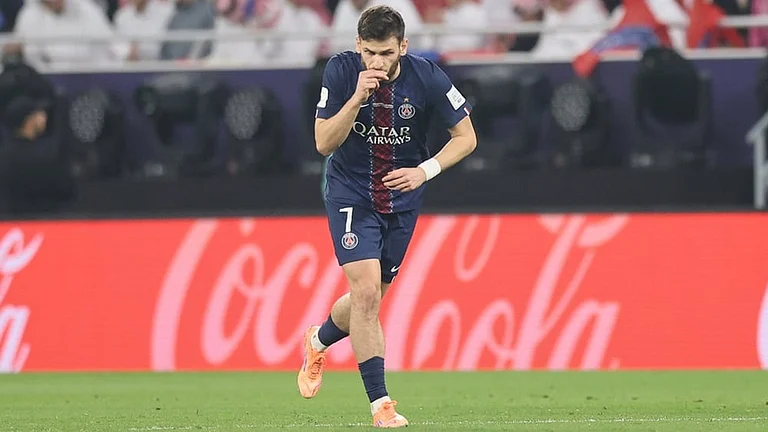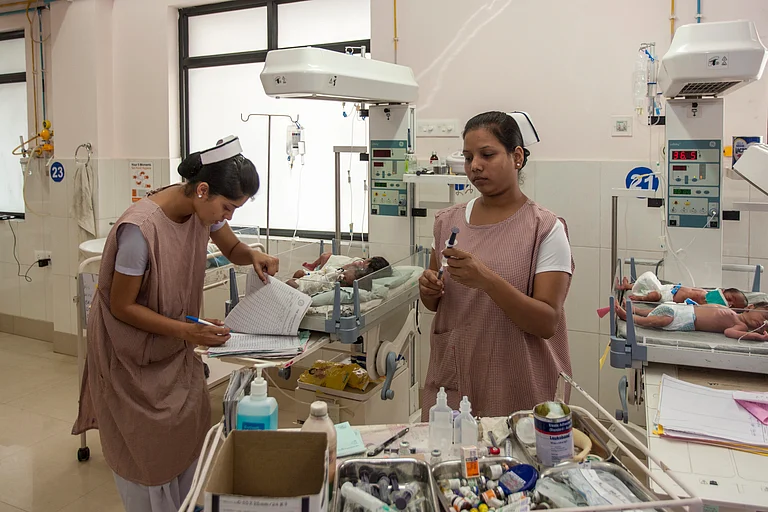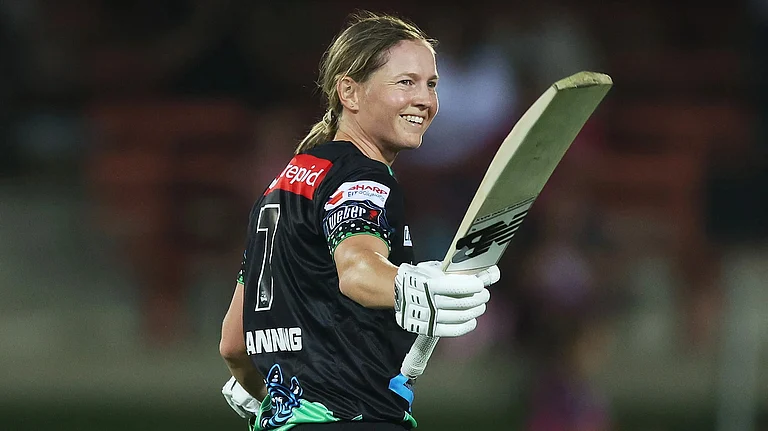Age is just a number...a truism or cliché that will reassure us with repetition. Tell that to a woman. And a woman who is a star, or an actor pursuing stardom. It can be a trigger for neurosis and a pathological fear of ageing. Because Bollywood is merciless. Age is not a factor in measuring a male star's saleability and power at the box office. A 50-plus Khan or Kumar can romance a woman in her 20s and 30s. What if a glamorous, gorgeous star is hitting 40 sooner than it is comfortable? You see stars aged 40 and above queen it internationally on red carpet events with sangfroid. At least, that’s the attitude they subtly convey. The unspoken statement is that a female star is more than a bikini-fit body.
Will this be true of Bollywood as well? If you read the tea leaves – box-office numbers, popularity across social media (don’t stars live or fade away on Instagram?) – it augurs well for some of our top stars: women who are pre, post and deemed millennials. Top-grossing films, red carpet presence, and brand endorsements don't seem to have diminished for Deepika Padukone, Priyanka Chopra (who still maintains her desi connections), Katrina Kaif, et al. Not in equal measure, but there is an invisible baseline below which lies the abyss of anonymity, the loss of A-lister status. Aishwarya Rai goes on forever. As does Madhuri Dixit on talent shows. Shilpa Shetty reminds you that she is still a hot babe with those unending legs on display. Alia Bhatt sits pretty on her secure perch of critical acclaim and popularity, post-marriage and motherhood. She is secure for another decade.
This raises a whole range of questions and seemingly irreconcilable paradoxes. We have been weaned on the enduring persistence of the male gaze that sweeps across continents and cultures when it comes to the visual medium. Films and their allied platforms—TV and OTT platforms—will endure in one form or another for visual and narrative pleasure. Women provided titillation and gratification to male desire with no agency over themselves - bodily representation and expression of desire—to cater to the male gaze. They were sexualised as objects, to provoke men salivating in the dark anonymity of the theatre or alone in front of the blue screen, letting their fetishes and fantasies run free, unrestricted by the presence of fellow viewers. In a sense, the woman on the screen—her body parts fragmented by the lascivious zoom lens and stripped of autonomy—satisfied a collective body of men and a single viewer in the privacy of his home. Was the heroine of the 70s and 80s aware of this fragmentation and submitted to the prevailing norm and internalised her sexuality? More importantly, did the women watching the same film identify with this desirable image and unconsciously aspire to that level of seductive beauty? Even when one part of the critical mind found this objectification humiliating, did they also secretly find it alluring? A validation of female power? A tough question that hasn’t been researched.
There is also the female gaze that appreciates the muscled shirtless body bared to both men and women. It is interesting to speculate if the toned and seductively dressed Deepika of Pathan makes female audiences both envious and wishing to work towards attaining the level of fitness that is both a turn-on and empowering. The days of the demurely sari or salwar kameez-clad heroine are long past. With globalisation, the body image of the heroine changed from voluptuous to svelte, to fit the norm of Western clothing that is not so forgiving as the modestly draped sari. Then followed changes in attitude and gradual acceptance of women’s autonomy in the changing social mores. The new millennium ushered in rom coms where premarital sex and the heroine’s assertion of her needs—emotional and sexual—were integral to the narrative. Within the overarching patriarchy of society and the film industry, stories—except for the loud action thrillers reeking of machismo (troubled or flaunted without qualms)—were dependent on relationships between equals. That meant the maturity of the heroine. She would no longer be the coy girl with a virginal touch-me-not air but you-can-tease-and-stalk-me permission automatically granted to the wooing game.
What a change from the Asha Parekh days of giggly frivolity (there were other actors, but she personifies the image and trend) to Band Baaja Baaraat, Love Aajkal, Cocktail and Piku. All these women made their own choices—wise or otherwise—and lived with the consequences, Shruti of Band Baaja Baaraat is just out of college but knows what she wants; the roles Deepika played are older and independent. The glamour quotient intact, it reached its acme in Pathan. Anushka Sharma of NH11 was an older working woman who takes on the macho goons of a Haryanvi khap panchayat single-handedly. And yes, the staunchest upholder of patriarchal “justice” is a daunting matriarch. Vidya Balan broke many Bollywood rules of what a heroine must be. From the actor who becomes a sex symbol in The Dirty Picture who uses her sexuality to climb the uncertain ladder to stardom (tarnished be it) to the hero of Kahani, she plays the older woman with unmatched assurance. Scripts are written for her. Taapsee Pannu followed up the landmark Pink with the homemaker wife of Thappad who will not tolerate disrespect from her husband and walks out of her marriage. Even her own mother and brother think she is making a molehill of a “mere slap” by a husband who is justifiably angry and frustrated at a career setback.
This new reality is hard to comprehend for many antediluvian relics—not many have survived in show biz, who pronounced marriage and kids were the death of a woman’s glamour and career. They hark back to the age of the clear gender divide (it is a hard fact of show biz) that has become fuzzy in the last decade, admittedly in a slew of different films made by Indie-inclined directors. It was refreshing to see Shah Rukh Khan play the attractively avuncular psychiatrist to a twenty-something Alia Bhatt troubled by issues ranging from perceived parental neglect to fear of intimacy in the under-appreciated Dear Zindagi.
Just see the difference between now and then. Earlier, Amitabh Bachchan played the son of Rakhee in Shakti (1982) after romancing her in Kabhie Kabhie (1976) and five other films. Women were offered only matronly roles after a certain age. Those were the days before personal fitness trainers, Botox and not-so-obvious cosmetic surgery. Today’s male stars have to flaunt six packs and rippling biceps. Women train hard in the gym and have personalised diet gurus and a range of cosmetics that give them a ‘natural’ look. This is a big industry catering to different skin tones. It's hard work and the pay-off is rewarding. There is no escaping social media and the paps lurking everywhere to capture the airport look, gym look and supposedly casual, unguarded moments. It’s heartening that today’s female stars are equal to the challenge.





















